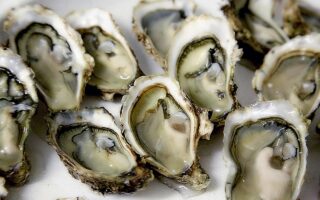France Is Getting Fatter


What is France coming to? They have banned cigarettes from most places, and now a health warning must appear on advertising for food products (see left).
The messages are part of the state campaign against obesity. Compared with the rest of Europe and Britain in particular, France does not have much of a weight problem, but the kilos are piling up, especially among the young and lower income groups.
Under the new law, one of four messages must be carried on broadcast commercials and print and internet ads or the manufacturer must pay a fine of 1.5 percent of its advertising budget to a national health fund. The one pictured above says: “For your health, don’t eat food that is too fatty, too sugary, too salty.”
Consumer groups are attacking the new law as inadequate. They want specific warnings on unhealthy food and an outright ban on adverts aimed at children.
The messages, designed to convey rules for healthy living and similar to warnings in alcohol adverts since 1992, all begin “For your health…” The other three say “…avoid snacking between meals… “…eat at least five fruits and vegetables a day…undertake regular physical exercise.”
One-third of France is now over-weight
With its tradition of good food and eating habits, France suffers less from obesity than any other European nation except Norway, according to EU statistics. However one third of the country is now overweight — with Body Mass Index over 25. Obesity (BMIE over 30) has doubled over the past decade to 10 percent of the population according to INSEE, the national statistics institute. The condition affects one in six children under 15 compared with one in 20 in 1980. In comparison, three quarters of British adults are overweight and 22 percent are obese.
The Health Ministry found in a survey that over 90 percent the French approved of the new advertising messages, which must appear at the bottom of television screens on printed displays or be spoken on the radio. However the campaign was denounced as “joke” by UFC-Que Choisir, the main consumer association. To test the effectiveness of the warnings, it put one on a television advert for a popular chocolate-coated breakfast cereal and showed it to 700 people, half of them children [pictured at top]. Nine out of ten viewers did not make a link between the warnings and the nutritional imbalance of the cereal, said UFC.
Those who were least able to understand the message were children and less educated people. “These are precisely those who are supposedly targeted by the message, so we conclude that the health message misses its goal,” said UFC. The association said the food industry had forced the government to dilute to the point of uselessness its plans for alerting the French to the dangers of processed food.
Mixed messages
Patrick Serog, a nutritionist and author, was less harsh. The Health Ministry’s intentions were good but the messages are confusing, he told us. “When a commercial for a sugary product shows the message saying that you should not eat sugar, that suggests that the product does not contain sugar. It’s ambiguous and the food industry will play on that ambiguity.”
At the same time as introducing the food warning, the Health Ministry received commitments from McDonald’s and four big food groups on improving the nutritional quality of their products in France. Coca Cola has undertaken to reduce its sugar level in drinks by 15 percent; Danone undertook to stop putting sugar in its Taillefine (Slimwaist) yoghurts. McDonald’s France is promoting sports, reducing fatty acids in its frying oil and cutting salt in its children’s menus by 30 percent.
Over the past two years, action has also been taken in schools, with better cantine food and the removal of snack and soda vending machines.
The latest health warnings are seen by many as part of a nannying tendency that runs counter to French tradition. France Soir wondered sacastically today when food would have to carry the cigarette-style label: “Trop manger tue” [Over-eating kills]. In reality, France has had some of Europe’s strictest advertising laws on alcohol and tobacco for the past 14 years. All tobacco advertising is banned and beer,wine and spirits advertising must carry the message “to be consumed with moderation”.
Here’s a recent map showing the fattest regions of France in red, with the least in yellow. It’s no surprise that, with the exception of the southern Langedoc Roussillon, the fattest French are mainly in the north and northeast. Eating habits there are closer to those of neighbouring Belgium and Germany. The south, with its famous olive oil diet, is not so lightweight after all. Surprisingly, the Bretons (on the west) are all apparently thin despite having the reputation for being France’s biggest drinkers. Paris, the most affluent spot in the country, is also one of its thinnest.
Share to: Facebook Twitter LinkedIn Email
More in children, food, health, maps, schools, technology, wine
By FrenchEntrée
Leave a reply
Your email address will not be published. Required fields are marked *



